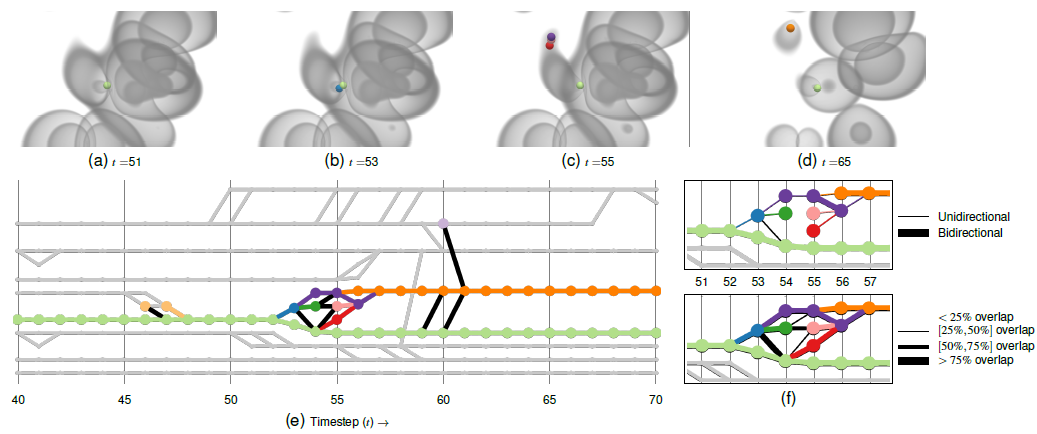Probabilistic Gradient-Based Extrema Tracking
Emma Nilsson, Jonas Lukasczyk, Talha Bin Masood, Christoph Garth, Ingrid Hotz
Room: 106
2023-10-22T03:00:00ZGMT-0600Change your timezone on the schedule page
2023-10-22T03:00:00Z

Fast forward
Full Video
Abstract
Feature tracking is a common task in visualization applications, where methods based on topological data analysis (TDA) have successfully been applied in the past for feature definition as well as tracking. In this work, we focus on tracking extrema of temporal scalar fields. A family of TDA approaches address this task by establishing one-to-one correspondences between extrema based on discrete gradient vector fields. More specifically, two extrema of subsequent time steps are matched if they fall into their respective ascending and descending manifolds. However, due to this one-to-one assignment, these approaches are prone to fail where, e.g., extrema are located in regions with low gradient magnitude, or are located close to boundaries of the manifolds. Therefore, we propose a probabilistic matching that captures a larger set of possible correspondences via neighborhood sampling, or by computing the overlap of the manifolds. We illustrate the usefulness of the approach with two application cases.